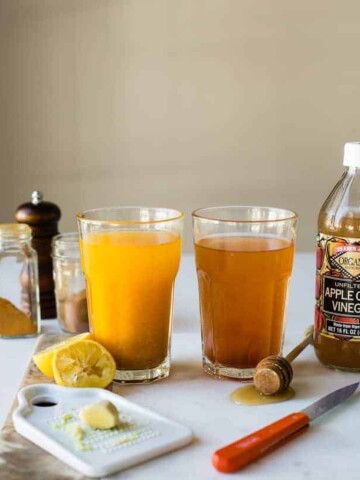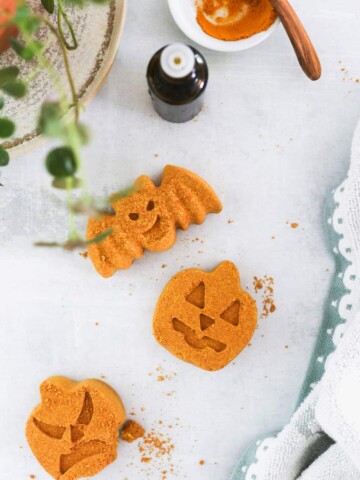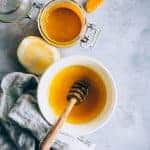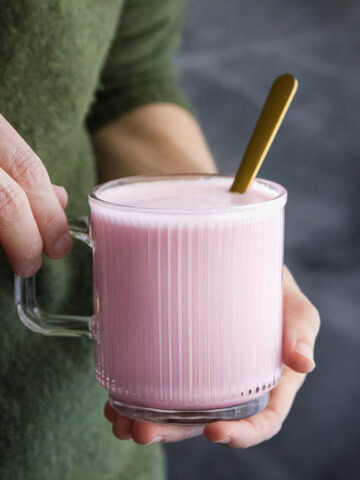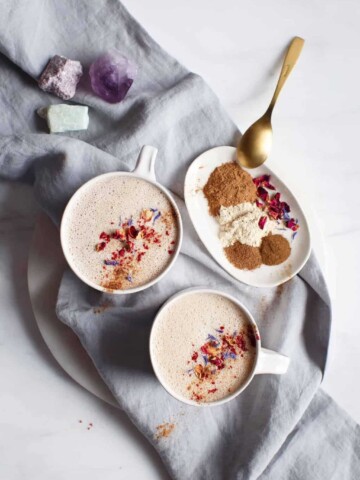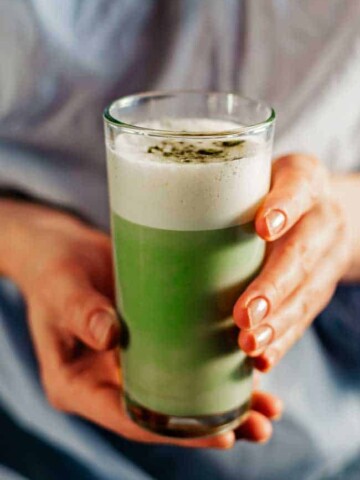Mixing turmeric with honey results in a versatile combo you can add to lemonades, smoothies, or even spread on toast. For me, it was about turning my morning warm water into an anti-inflammatory elixir.
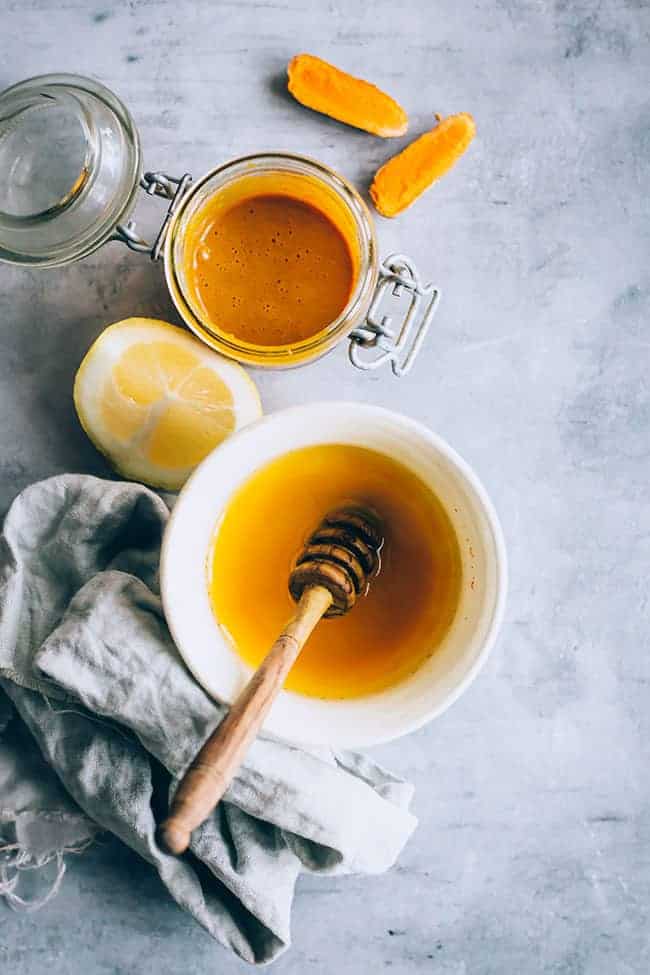
The warm water with lemon wakes up my metabolism, while turmeric calms down acidity and inflammation. Honey acts as a prebiotic, and together, they prepare the stomach and gut microbiome for a new day of challenges.
Opting for a mug of warm lemon water first thing in the morning can help you feel more energized and alert (thanks to the lemon’s citric acid). Plus, you might not want (or need) coffee to get you going. And ditching coffee comes with its own health benefits!
Jump to:
Turmeric Honey Benefits
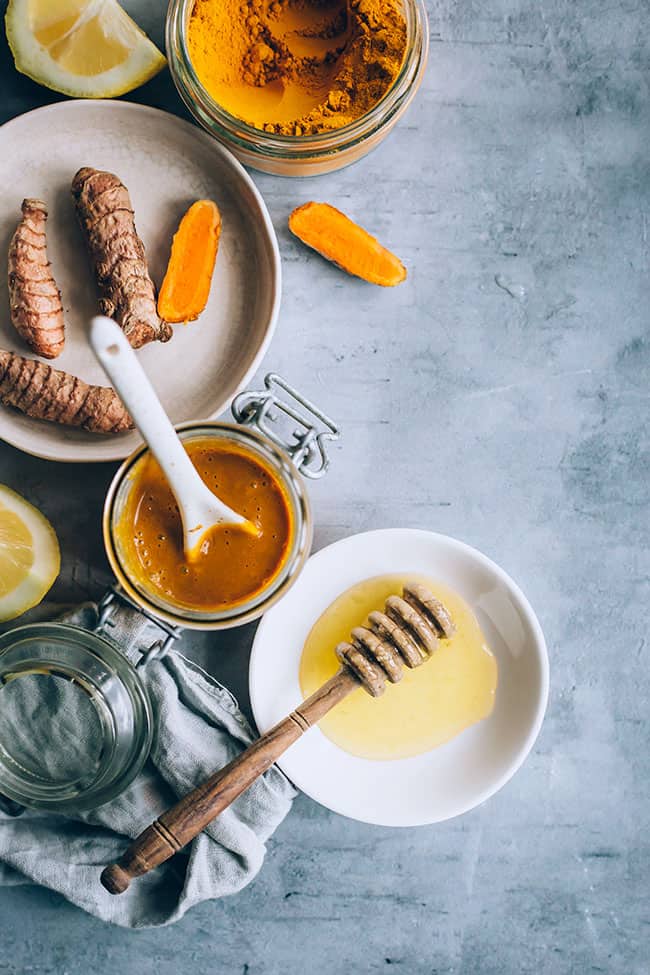
Turmeric honey, which is a combination of turmeric and honey, is a popular natural remedy with several benefits:
Anti-Inflammatory Properties: Both turmeric and honey have anti-inflammatory properties, and when combined, they may help reduce inflammation in the body.
Immune System Support: Honey contains antioxidants and has immune-boosting properties. Turmeric is known for its potential immune-boosting effects as well. Combining the two may help support the immune system and protect against common illnesses.
Digestive Health: Turmeric has been used traditionally to aid digestion and relieve gastrointestinal discomfort. Honey can have a soothing effect on the digestive system as well.
Antioxidant Benefits: Turmeric and honey both contain antioxidants, which can help protect cells from damage caused by free radicals.
Cough and Cold Relief: A mixture of turmeric and honey is often used as a natural remedy to relieve symptoms of coughs and colds. The anti-inflammatory and antimicrobial properties of these ingredients can help soothe a sore throat and alleviate congestion.
How to Make Turmeric Honey
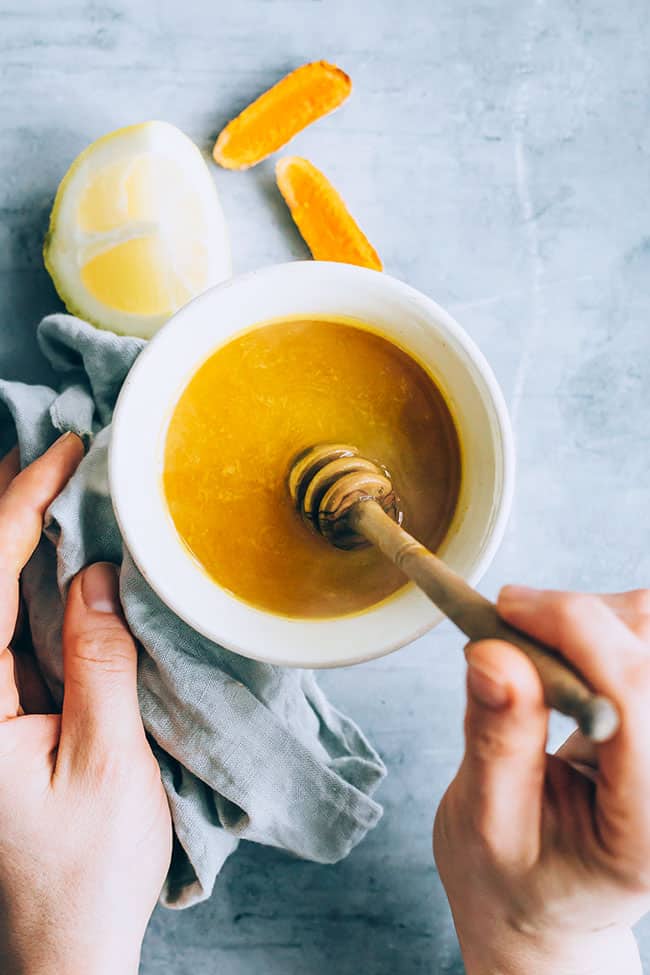
Mix Turmeric and Honey: In a small mixing bowl, add the honey.
Gradually add the turmeric powder while stirring continuously to create a smooth paste. You can adjust the amount of turmeric based on your taste preferences.
If desired, add a pinch of freshly ground black pepper to enhance the absorption of curcumin. Stir well to combine all the ingredients.
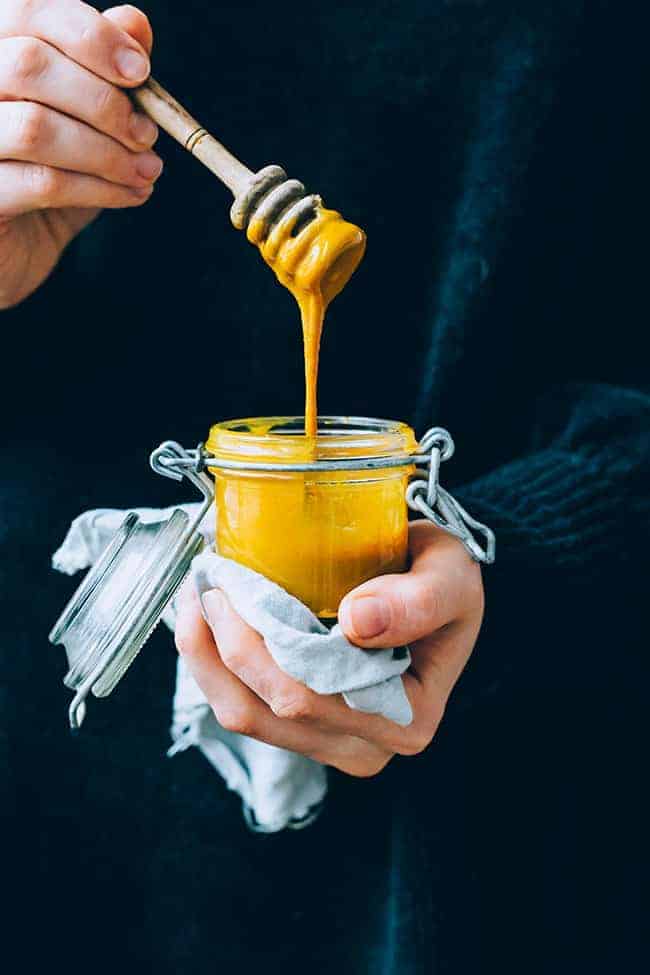
Transfer to Container: Pour the mixture into the glass jar or container.
Seal the jar or container with a lid.
Allow the turmeric honey mixture to sit at room temperature for a few days to let the flavors meld. This will also allow the turmeric to infuse into the honey. Some people prefer to leave it for a week or longer for stronger flavors.
Using Turmeric Honey
Natural sweetener: You can use turmeric honey as a natural sweetener in tea, on toast, in smoothies, or drizzled over yogurt or oatmeal.
Cough remedy: Use turmeric honey in a hot toddy remedy for coughs and sore throats.
Skin Health: Turmeric and honey, when applied topically, can improve the appearance and health of your skin. Honey is known for its wound-healing properties, and turmeric has antimicrobial and anti-inflammatory effects.
For topical use on the skin, you can apply it in a face mask or a spot acne treatment to areas of concern and let it sit for a short time before rinsing.
Turmeric Honey Beverages

Morning lemon water: Sip this anti-inflammatory elixir daily as part of your wellness routine. Enjoy in the morning on an empty stomach, or before bed if you prefer. Remember that turmeric can settle at the bottom of the cup, so you may need to stir it occasionally as you drink.
Golden milk: You could also use this turmeric honey to add some sweetness to a pre-bedtime golden milk. The warming taste and velvety texture of golden turmeric milk work together to make a calming evening drink that soothes your digestive system, relaxes your mind, and prepares you for a regenerating sleep.
Turmeric hot toddy: Use turmeric honey to make a warm hot toddy for soothing scratchy throats and lingering coughs.
Digestive elixir: If you don't have time to make turmeric honey ahead of time, you can mix them together just before using, like in this version with apple cider vinegar for added digestive benefits.
- 1–4 teaspoons fresh lemon juice
- 2 teaspoons raw honey
- 3–5 cracks of black pepper
- 3–6 slices of fresh turmeric
- 2–5 teaspoons apple cider vinegar
- 1 teaspoon organic turmeric powder
- 1–2 slices of fresh ginger
- 1–2 teaspoons manuka honey
Instructions
Heat 2 cups of water in a small pot until it reaches a boil. Add the black pepper, fresh turmeric, and fresh ginger to the pot and let it simmer for 5–7 minutes.
Add ground turmeric and apple cider vinegar to the pot and let it simmer for an additional 2–3 minutes. Remove the pot from heat and let it cool for a minute or two.
Strain the mixture through a fine-mesh strainer or cheesecloth and discard the solids.
Add fresh lemon juice and raw honey to the strained liquid and stir until the honey has completely dissolved.
Finally, add manuka honey to the mixture and stir until everything is well combined. Serve warm or cold as desired.
FAQ
Yes, you can use fresh turmeric. Simply grate or finely chop fresh turmeric and mix it with honey. The flavor and potency may vary compared to using turmeric powder.
The ideal dosage varies from person to person and depends on the intended use. Typically, a teaspoon to a tablespoon daily is a common serving size.
Yes, turmeric honey can be used topically for skincare. It may help with acne, eczema, and other skin issues. Follow this turmeric face mask recipe or simply apply a small amount to the affected area, leave it on briefly, and rinse off.
More Turmeric Recipes
If you want more ways to incorporate turmeric into your routine, check out these recipes as well:
📖 Recipe
Turmeric Honey + Anti-Inflammatory Morning Drink
Equipment
- Lidded glass jar
- whisk
Ingredients
Turmeric Honey
- ½ cup organic raw honey
- 1 tablespoon ground turmeric
- 1 peppercorn crushed
Morning Elixir
- 1 cup purified water, warm
- 1 tablespoon freshly squeezed lemon juice
Instructions
Turmeric Honey
- Add the honey and turmeric into a jar and whisk with a spoon to obtain a creamy mixture.
- Add the crushed peppercorn and stir to incorporate.
- Pour the mixture into a glass jar with a lid. Allow the turmeric honey mixture to sit at room temperature for a few days to let the flavors meld.
Morning Elixir
- Add 1 tablespoon turmeric honey to a mug, and add 1 cup warm water and 1 tablespoon lemon juice.
- Stir to incorporate, and serve warm on an empty stomach.
Notes
References
Xu XY, et al. Bioactivity, health benefits, and related molecular mechanisms of curcumin: current progress, challengers, and perspectives. Nutrients. 2018.
Kulkarni SK, et al. An overview of curcumin in neurological disorders. Indian J Pharm Sci. 2010.
This article was medically reviewed by Dr. Gina Jansheski, a licensed, board-certified physician with more than 20 years of practice experience. Learn more about Hello Glow’s medical reviewers here. As always, this is not personal medical advice, and we recommend that you talk with your doctor.
983
